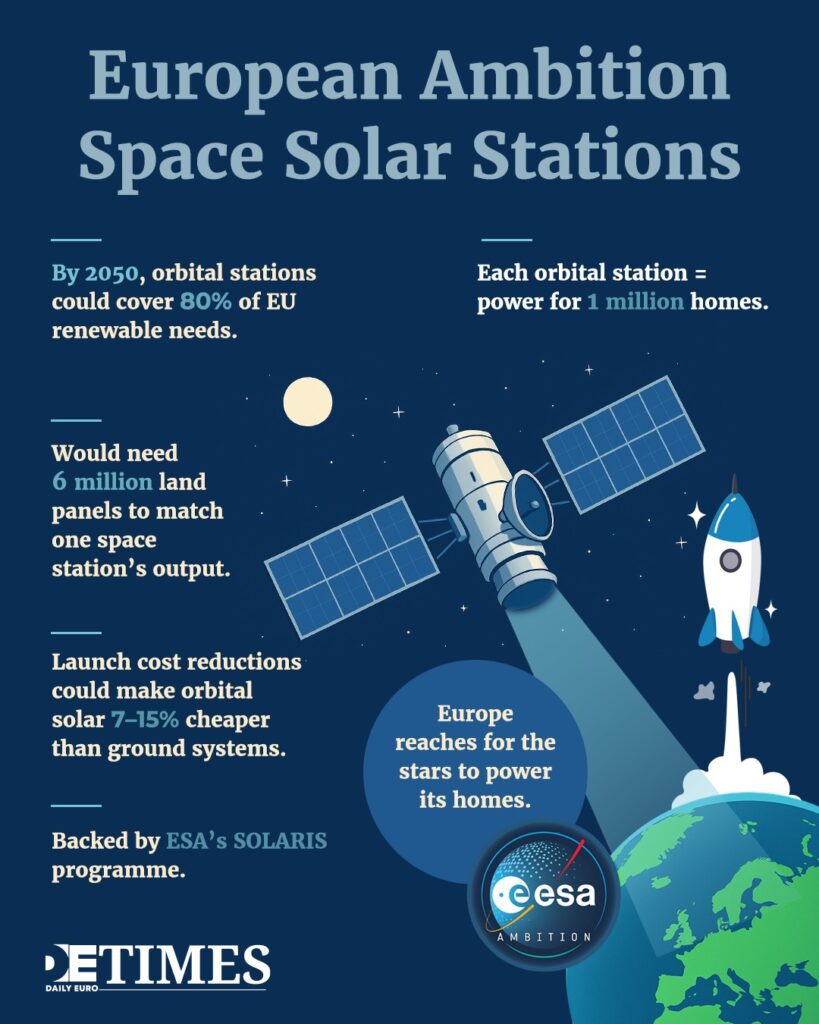Europe’s latest space-based solar power research promises to deliver 80% of the continent’s renewable energy needs by 2050.
Across the pond, homeowners save thirty-five dollars monthly with plug-and-play balcony systems.
One approach reaches for the stars, the other keeps feet firmly planted on Earth.
Which path truly serves people better?
European Ambition Soars Beyond Earth’s Orbit
King’s College London researchers calculated that space solar panels could slash Europe’s land-based renewable requirements by four-fifths.
Each orbital station would generate power equivalent to nuclear facilities serving over one million homes.
To match this output on Earth would require six million panels. The European Space Agency backs these proposals through its SOLARIS programme, envisioning satellites beaming microwave power to vast receiving stations spanning several square kilometres.
With falling launch costs, researchers estimate space systems could undercut ground installations by up to 15%.
American Pragmatism Powers Up at Home
Meanwhile, Americans take a different tack. Dwyer’s backyard installation consists of two 400-watt panels costing $2,000 total. No rocket science required.
The residential micro inverter market tells its own story exceeding $2.6 billion in 2024, with 10.4% annual growth expected through 2034. San Francisco nonprofit Bright Saver brings European balcony solar trends to American homes.
These plug-and-play systems need no permits or interconnection approvals in some jurisdictions. Solar added 50 GW of new capacity to American grids in 2024; more than any technology in twenty years. People simply plug in and start saving.

Space Technology Carries Earthbound Costs
Behind orbital dreams lurk practical nightmares. Ground receiving stations demand vast land areas for microwave collection. Building and maintaining satellites requires massive upfront investments that make mortgages look like pocket change.
Technical failures at orbital heights prove costlier to fix than ground-based problems.
Moreover, microwave power transmission requires several square kilometres of receiving infrastructure. Rural communities might resist hosting these installations, and rightfully so. Environmental concerns about beaming concentrated energy through the atmosphere remain unresolved.
Distributed Generation Beats Centralised Control
Balcony panels put power where it belongs in people’s hands. Homeowners control their installation, maintenance, and replacement schedules. No bureaucratic approvals slow down adoption.
Costs stay transparent and manageable. Break a panel? Replace it at will.
Space-based systems do the opposite, concentrating power generation in corporate boardrooms.
Orbital infrastructure requires massive capital that only large corporations or states can muster. Technical expertise stays locked within specialist circles, while public control over energy supply shrinks.
Technology Choices Shape Social Outcomes
After decades of grand energy promises, people want working solutions today. Balcony solar delivers immediate savings without waiting for breakthrough technologies that may never arrive. Installation takes hours, not years of planning committees.
European space programmes risk repeating nuclear power’s pattern of cost overruns and endless delays.
Citizens might fund the research while benefits flow straight to corporate shareholders. Energy self-reliance gets further away, not closer… the opposite of what Europe needs.
Start Small, Scale Smart
Widespread balcony installations would build technical knowledge and supply chains organically. Manufacturing scales would drive costs down naturally, while people gain direct experience with solar technology.
Birmingham residents installing deck panels today achieve more energy independence than waiting twenty-five years for space stations that might never materialise.
Sometimes the best giant leap is a series of small steps that actually lead somewhere.
Keep up with Daily Euro Times for more updates!
Read also:
Water as the New Oil: Europe and Morocco Deepen Cooperation
Danes Spruce Up Mauritanian Desert with Green Hydrogen
Energy Bridge Across the Adriatic






